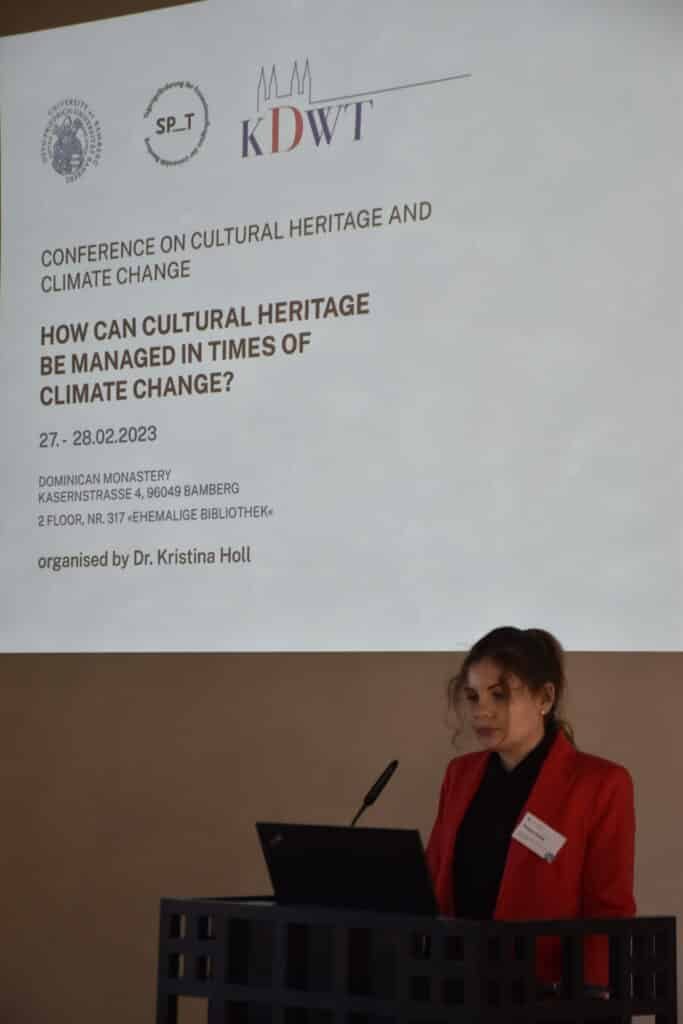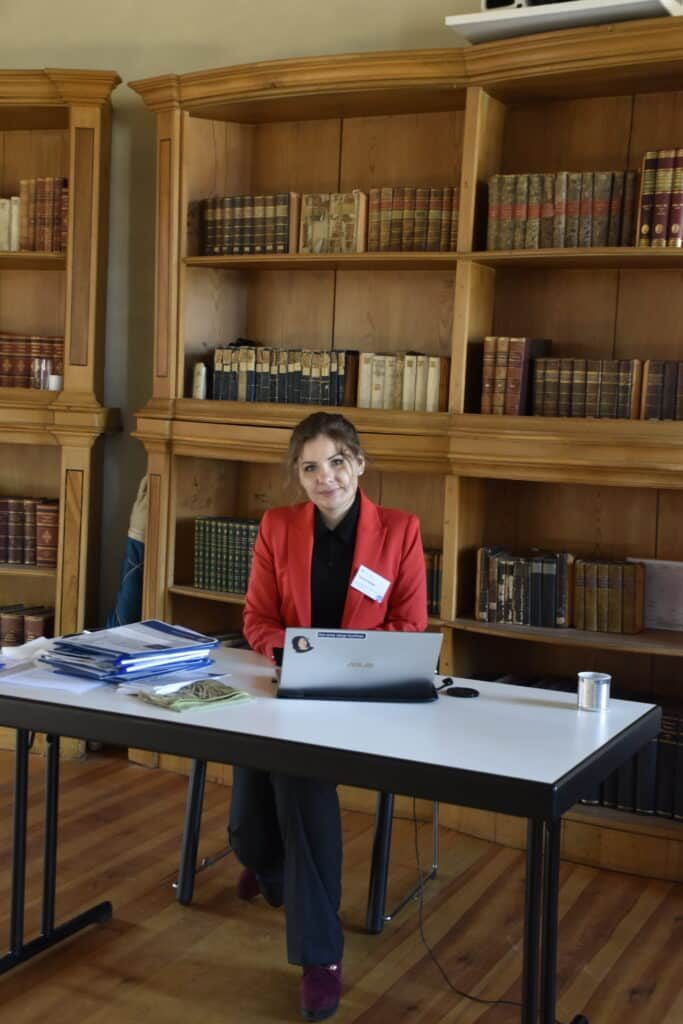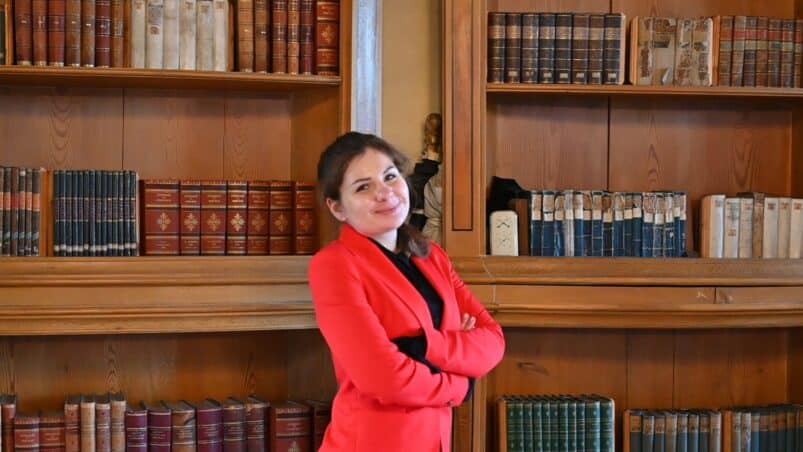The next generation of heritage professionals and students does not receive enough support to enter the field of cultural heritage at universities, reckons Tetiana Golub. They are the people who need to preserve our heritage in the future, but they often lack access to events and positions where they can earn experience and make an impact. Golub, an Ukrainian archaeology and cultural heritage student at Bamberg University, experienced as a young heritage professional what issues young people in heritage encounter, not just in Germany, but also in the European heritage sector.
Under-representation of the younger generation
I had the opportunity to co-organize a conference called “How can cultural heritage be managed in times of climate change”. The conference took place on February 28-29 2023 at Bamberg University in Germany. The workload of organising the event was divided between a professor and me at the Centre for Heritage Conservation Studies and Technologies, which was quite a lot for two people to manage 200 participants.
All the speakers invited were established professionals and tried to answer all the questions about finding long-term sustainable protection strategies for our cultural heritage. This conference was an excellent opportunity to discuss handling climate change effects and to gain invaluable experience.
However, on the other side of the coin, there was the so-called ‘age question’: the main negative aspect of the conference was the under-representation of the younger generation, not only among speakers but also among participants. I was surprised to notice that only a few master’s students participated in the conference, and only two or three of the twenty speakers were under the age of 30. I felt this was not a university conference but rather a closed meeting for professionals with a lot of experience. Almost everyone was familiar with each other, and one of the key objectives, such as “building new networks”, had been compromised.

Causes of the problem
There are several reasons that there were very few young professionals and students involved: Firstly, there was a lack of promotion for the conference among students; no emails were even sent to cultural heritage students. Also, there was no promotion during lectures, which I found strange. There are also no reports about the conference, and you can’t find anything online about the results, almost like it never took place. It raises the question: do we, bachelor and master students, should be participating in such events to learn about development in important areas such as heritage and climate change?
Secondly, I had a feeling that there were very few young professionals among the speakers because professors are hesitant to be represented by the youth during events. It could also be possible that young professionals haven’t been given enough meaningful amount of work to represent during the conference. Another reason could be that the financial support from the government and universities is not enough, so research groups are too small and cannot hire young professionals. No matter the reason, the result is an under-representation of the upcoming generation among speakers.
Finally, there is a need for more understanding of the importance of transferring knowledge to students and young professionals. It is important to show students where they can be just in a few years. Seeing young speakers telling you about their successful projects can be a huge motivational boost to be part of cultural heritage research for young professionals and students. Unfortunately, the conference gave the impression that only scientists with 30 years of experience have a chance to participate and present serious projects.
Practical solutions

Can this be changed, and how? I see ways to solve this problem. These solutions could be implemented not only in Germany, but also in other European countries where young professionals and students are struggling to find their way in the sector.
Firstly, efforts should be made to gain attention and resources on social media since it’s an important tool for communicating with young people and spreading information. Letting people know that there is a conference they could take part in is a first step. However, social media at Bamberg University is currently in poor condition, and this will need to be addressed.
Secondly, there should be a focus on increasing the number of master’s and bachelor’s students participating in cultural heritage projects. One way to do this could be to increase the number of work students and interns. I have experienced this issue myself: as a working student, I am incredibly enthusiastic about the opportunity to work on a project in the cultural heritage department at Bamberg University. I have worked tirelessly to showcase my skills and passion for the subject. However, I have been deeply disappointed to learn that I have not been offered the opportunity to work on the project during the upcoming semester.
Last but not least, it is crucial to ensure that the number of young professionals who serve as speakers at these conferences is at least 40%. This will help promote greater understanding and collaboration between students and (young) scientists and encourage the transfer of knowledge and experience between these groups.
I am sure that my experience can be relevant to other universities in Germany and other European countries. Ageism is an important problem in modern society, just as sexism and racism are. Intergenerational collaboration in the cultural heritage sector is the key to successful work.
The importance and key points of the conference Still, the topic of heritage and climate change is influential and relevant today. It is already visible in various sectors, including cultural heritage. It's more than just the basic structure of buildings that are at risk from heavy rainfalls, storms, or heat waves. Precious things inside buildings, like old paintings in churches or fancy furniture in old houses without air conditioning, can also be easily damaged. The harm caused by bad weather conditions, like high temperatures or humidity, can slowly build up over time, and people might not notice it immediately. It is significant to highlight the main thoughts from this conference: understanding and integrating cultural heritage into climate change discussions is crucial for creating strong protection plans. Efficient preservation strategies and new technology like smart sensors, IoT architecture, and 3D scanning can help monitor and control the conservation state of objects, reduce energy and water demand, and detect potential problems like mould growth. Additionally, using UAV technology and advanced measurement techniques can help predict and prevent cultural heritage degradation, while model systems like IAQCC can improve insulation, ventilation, and IAQ policies. And finaly, the sustainable preservation of cultural heritage requires reducing energy consumption in museums, archives, and libraries. And while these kind of solutions are incredibly important, at the moment they are not shared during conferences with the next generation of professionals, simply because they are invited and have difficulties getting into these events.
Unfortunately, such a relevant and influential topic is not widely shared among students and young professionals. Engaging students and young professionals is crucial for the growth and development of any field. They bring fresh ideas, new perspectives, and a willingness to learn and innovate.
In climate change and cultural heritage preservation, involving young people in discussions and decision-making processes is especially important. They are the ones who will inherit the consequences of our actions, and their input can help shape the future of cultural heritage preservation. Empowering and supporting the younger generation can ensure a sustainable and responsible approach to preserving our cultural heritage for future generations.
About the Author
Tetiana Golub is a Bachelor’s student at Bamberg University with a focus on feminist archaeology and cultural heritage, and a European Heritage Youth Ambassador. Originally from Ukraine, she obtained her first degree in computer engineering from Kyiv Polytechnical University and worked in digital marketing for eight years. After moving to Germany, Tetiana followed her dream of becoming a cultural heritage specialist. Her passion for cultural heritage preservation led her to become a Europa Nostra ambassador, where she has actively engaged with and promoted the conservation of Europe’s cultural heritage. Tetiana’s unique engineering and cultural heritage background gives her a valuable perspective on integrating technology in cultural heritage preservation.

